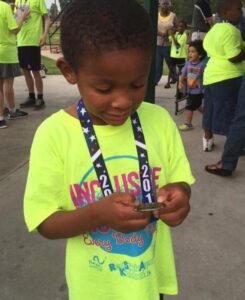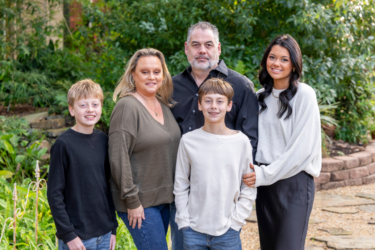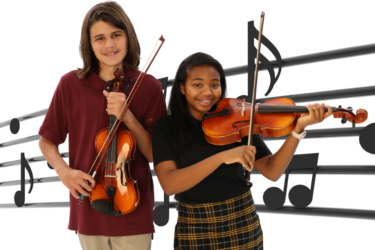Kids can be real jerks. Actually, humans can be real jerks. But, often that jerkiness stems from a desire for comfort or security.
We crave familiarity and validation so it feels nice to surround ourselves with people who are a lot like us- people who look like us, think like us, live like us, and behave like us. This isn’t something new, and it isn’t something that only happens with adults. It actually begins in childhood. Go to any elementary school playground and you’ll see kids grouped together based on appearance, a phenomenon observed over and over again by researchers. While this usually creates a pretty conflict-free and comfortable social life, it also pushes people who are not like us further and further away. The more distant people are, the more difficult it is to understand or relate to them and the easier it becomes to judge, forget about, belittle, and at the extreme, dehumanize them. This includes people with disabilities.
It used to be that all kids with neurological disabilities were placed in a special education classroom, separate from their typically developing peers. However, as the rate of children diagnosed with autism increases and researchers understand autism better, more and more kids with autism or similar neurological disabilities who are able to academically keep up with their peers are being included in the traditional classroom, a practice known as “inclusion.” Although educators are learning about the benefits of inclusion, one of the aspects of inclusion that is often lagging behind is how typical kids respond to their peer with a neurological disability.
As mom to a kiddo with autism who just started kindergarten in a typical classroom, I am thrilled to see him being included with his peers who do not have autism. However, the hard part of the journey has been going to the school and seeing him playing alone because the other kids avoid him because sometimes his behavior is a bit…different. He is so smart and loving and funny. He loves big, laughs hard, and he talks of his friends dearly. However, he also often interacts with people and objects differently than most kids, and they just aren’t sure what to do with that.
Unless something changes, and he is able to make some genuine friends, I worry what the isolation will do to his development and his personal happiness. Even worse, I fear that one day because he is misunderstood and alone, that his name will be in the headlines as a kid who was bullied because of his difference. That’s where you come in, parents of typically developing kids. I am begging you to teach your kids about neurodiversity. Neurodiversity is simply the concept that our brains aren’t all the same and that difference is not “wrong.” Difference in our brain development is just another variation of what it looks like to be human- not so different than us being different heights or having different shades of skin.
So how can you teach your kids about neurodiversity?
- Read age-appropriate books about neurodiversity. For example, there are several books featuring Julia, the Sesame Street character with autism, that do a great job of explaining that particular disability in kid-friendly, age appropriate ways.
- Model acceptance & inclusion. Just like you might seek out diversity in other ways in your life, seek out neurodiversity. When you have friends with disabilities, it models those relationships for your children. If there is a child with autism or another neurological disorder in your child’s class, try to include them as often as you can in things like birthday parties. Also, be sure to treat people who may act or communicate differently than you with respect, kindness, and acceptance.
- Teach your child about how brains work. By helping them to see how different individual brains work and how things can influence our brains, we are helping build empathy and understanding. There are even little activities that can help kids understand what it feels like to have a communication disorder or struggle with information processing. Try some of those out.
The truth is that all kids (even the typically developing kids) benefit immensely from an inclusive educational environment, both in academic and social ways. Promoting inclusion and talking about neurodiversity with typically developing kids lays a foundation for increased empathy and greater acceptance of difference. In a social media era where people seem more divided and self-centered than ever before, what a great gift we can give our children and the world by raising kind and empathetic people.
http://inclusiveschools.org/together-we-learn-better-inclusive-schools-benefit-all-children/





